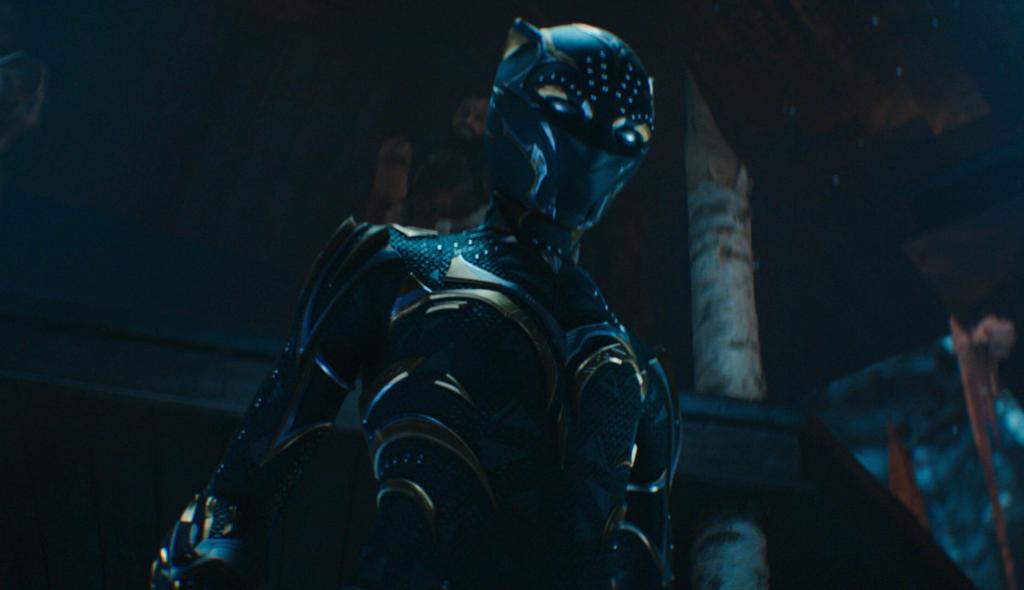
The animals of Wakanda (if it was a real place)
Olivia Beavers, Assistant Curator of Vertebrate Zoology delves into the world of Black Panther and imagines which animals would live in the utopian region if it was a real place.

When the first Black Panther Marvel film was released back in 2018, videos went viral. Black children’s excitement was captured as they saw themselves represented centre stage and through an extraordinary cast, a novelty particularly in the UK and America. For once, they were the main characters, and they could re-enact epic scenes in the playground with friends of all backgrounds. Beyond the touching (and telling) excitement of children, the film has had a huge influence on black culture worldwide and continues to do so in the sequel Wakanda Forever. With this energised focus on the African continent in the film industry, and in particular East Africa, where the fictitious Wakanda is said to be set, we questioned how much we knew about the landscape there. In particular, we wondered what animals in our Vertebrate Zoology collections might make an appearance if there were a Wakandan Wildlife Reserve.
Here we present a brief fact file of the spectacular African vertebrates we might find, including mother-tongue translations, in Swahili.

Karani (tamba)/Ndege kilemba: Secretary Bird
These birds get their name from way back in the 1800s when male secretaries would wear dark knee-length trousers and grey tailcoats, often with a goose-quill pen tucked behind their ears. As you can see, the bird does show some resemblance to this description. Secretary birds feed on their prey (small mammals, birds, snakes and large insects) by first, chasing and striking it with its bill or foot and then swallowing it whole! Also known as a ‘Killer Queen’ its long legs would be great in combat against Namor.

Unknown: Amethyst Starling
This vibrant bird feeds on berries and other fruits but will happily dine on winged termites and ants if the opportunity presents itself. The males of this species have a dazzling amethyst plumage whilst the females are brown with a white and brown streaked underside. It’s iridescent, royal purple feathers could definitely be used to blind and dazzle the enemy as well as help it to hide in plain sight amongst other fantastically bright colours in Wakanda.

Kakakuona: Ground Pangolin/Tree Pangolin
Pangolins are well armoured individuals that have three lines of defence: if touched or grabbed, they roll up into a complete ball; they will lash out using their sharp scales on the tail; they will shield their head with their front legs and expose their scales to predators. These agents of defence would most certainly be able to teach Shuri, M’Baku, Okoye and Dora how to roll their way out of tough situations. Pangolins are more closely related to lions and wolves than anteaters and armadillos - who are more similar in appearance.

Korongo Taji: Grey Crowned Crane
These cranes have a yellow crown of feathers and walk very majestically. Despite their size (standing over a meter tall) and unlike other cranes, they roost in trees! The Grey Crowned Crane is Uganda’s national bird and features on the country’s coat of arms flag.

Komba: Northern lesser galago
These nocturnal primates have large round eyes and are well adapted for night vision – a great trait to have when spying on the enemy. Their mobile ears can move independently, allowing them to zero in on insects that they track and hunt. They are also known as Lesser bushbabies – named after the similarity between its call and crying human babies.

Hudihudi: Hoopoe
Hoopoes are found across Africa, Europe and Asia. They have plumes that range in colour from cinnamon to a lighter, sandy brown. They are roughly the same size as starlings and have a crest on their head that is usually swept backwards. When startled or excited, the crest opens and fans out in a circular shape, perhaps a good way to silently signal that there’s danger in Wakanda? These birds are said to be antisocial and are usually found in a pair or alone.

Chui: Black Panther
Those who saw Black Panther (2018) will know about the sneakers developed by Shuri which helped T’Challa to sneak around silently and fall from great heights without sustaining damage! Black panthers carry out their own stealth missions in the jungle and are naturally camouflaged. Black Panthers are actually leopards (‘chui’ is leopard in Swahili) or jaguars with extremely dark pigmentation from increased melanin. On most black leopards and jaguars, you can still see their rosettes or ‘spots’. Leopards are clean animals and often remove their prey’s fur/ feathers before eating.
While Blank Panther redefined the film industry and brought Afrofuturism into the mainstream, the natural beauty of East Africa has been there all along. We hope this short list inspires you to find out more about the incredible animals that live there.
